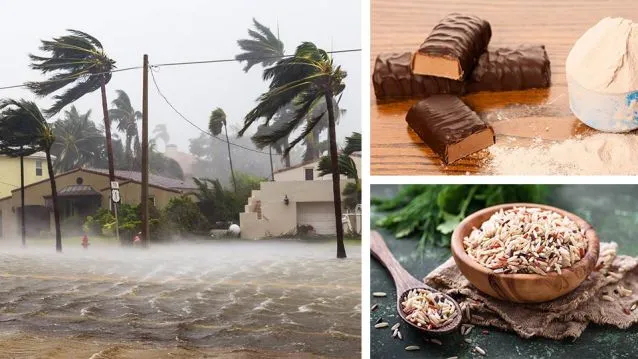No one wants to think that they would one day be stuck in a disaster situation. It’s an unnerving thought, one that encourages people to proactively plan ahead.
Whether it be a flood, earthquake or hurricane, the evolution of media has allowed us to become aware of what’s going on out there. In some cases, events are minor in terms of injuries. However, in other cases, such as the Tangshan earthquake in 1976, hundreds of thousands of lives can be lost.
If you are the type of person who cooks from scratch and doesn’t often purchase ready-made foods, it is important that you keep a little disaster pantry pack. This is particularly true for those who live in areas that are prone to natural disasters, including Texas, Florida and Alabama.
Foods to store in your “disaster pantry pack”
When it comes to the ultimate disaster-ready pantry, you need to store a backup supply of food that is both cost-effective and easy to manage.
If you’re wondering how much you should store, FEMA and the American Red Cross recommend a two-week supply. That means you’ll need to work out roughly how much each household member would consume in a disaster situation. After all, a house that has two parents and three teenage boys will need more than a single female household.
You do not need to purchase the following nine items all at once, either. Slowly build your collection, picking up one to two items each week. Then, set up a designated area in your basement to organize your disaster goods. Being aware of what you have and what you may still need is important.
1. Canned goods
You may not be a fan of canned soup, but when it comes to a disaster situation, canned goods are your best bet. If there is an earthquake, for instance, you may not have access to power. Canned goods are already cooked and do not need to be heated in order to consume.
They are durable (unlike glass jars, which may break) and have a long shelf-life. It is best to purchase a variety of options, including canned fruits and vegetables, meat and fish, as well as coconut milk, soups and beans.
2. Water
You should store enough water so that each person would have approximately one gallon per day. For a three-person household, that would equate to 42 gallons for two weeks. In more extreme situations where water is scarce, you can also store water purification supplies.
3. Bouillons
The perfect flavoring ingredient for soups, homemade bouillon cubes (as well as dehydrated bone broth) will deliver a variety of key vitamins, proteins, and minerals. They are compact and when making this recipe, they will last at room temperature for approximately six months. You can count on each bouillon to make one cup of stock.
4. Dehydrated powders
When it comes to dehydrated powders, you are spoiled for choice. Powdered milk, whey powder, and powdered eggs are all great options. You can also find drinks and other powdered foods, all of which can be prepared with ease. Often calling for just water, make sure you account for these foods while stocking your water supply.
5. Protein bars
Offering your body a quick boost of energy, this portable source of nutrition is great for hiking, as well as within a disaster situation. The best part is, you can find protein bars that are made from all-natural, organic ingredients. Packed with fiber, protein, vitamins and minerals, it is important that your body and mind get the building blocks they need to remain active.
6. Rice and grains
You can store whole, uncracked grain kernels for years without it losing significant amounts of nutrition. However, you will require a small grain mill — preferably one that does not use electricity. You should also store approximately five pounds of rice or legumes per person per month.
7. Herbs, spices and salt
Some of the most common herbs and spices included in a preppers stockpile including cinnamon, cumin, cayenne, black peppercorns, bay leaves, ginger and rosemary. To grind these ingredients, be sure to invest in a mortar and pestle set (which you can use in everyday cooking scenarios). Also, a good quality sea salt is imperative.
Free Book: The Healing Garden: Growing Life-Saving Food For Ultimate Survival
8. Honey
Offer both culinary and medicinal applications, Manuka honey is important to have on-hand. A rapid source of energy and nutrients, honey will also enhance wound healing, soothe a sore throat and aid digestion. If you notice that your honey has crystallized over time, this typically means that some of the original moisture has been lost. Simply simmer the jar in warm water and the crystals should dissolve.
9. Apple cider vinegar
Whether you would like to wash fruit, marinade meat or increase the nutritional profile of any meal, apple cider vinegar has many uses. Some use apple cider vinegar as a digestive tonic, while others use it to disinfect their home. Here are some more everyday uses for this pantry staple.
If you ever find yourself in a disaster situation, remain calm. In terms of your food supply, consume all the ingredients from your fridge and freezer first, as long it is safe to do so. By proactively stocking your pantry, you will gain greater peace-of-mind and in the case of an emergency, you and your family will go to bed with full tummies.
— Krista Hillis
Free Book: The Healing Garden: Growing Life-Saving Food For Ultimate Survival

